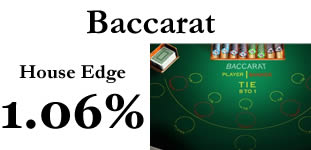 Although I feel like they are a bit late to the party, a new site called Iggys House will allow people to list their properties on the Multiple Listing Service (MLS) for free in certain states. Currently 20 states are offered, with more to scheduled to come later. After looking around online, it appears this usually costs around $300 from other For Sale By Owner websites. I wonder what the wholesale cost for a listing is…
Although I feel like they are a bit late to the party, a new site called Iggys House will allow people to list their properties on the Multiple Listing Service (MLS) for free in certain states. Currently 20 states are offered, with more to scheduled to come later. After looking around online, it appears this usually costs around $300 from other For Sale By Owner websites. I wonder what the wholesale cost for a listing is…
According to their press release, 12% of home sales in 2006 were sold by their owners without any agent assistance (or I guess MLS listings?). About 7% hired a ‘discount listing agent’ that performed few if any additional services beyond simply listing the home on the MLS.
How to they plan on making a profit? By using the publicity gained from this to promote their services as buyer’s agents. They figure if you are a do-it-yourself seller, why not be a do-it-yourself buyer? Their sister company, BuySide Realty, provides homebuyers 75% of the commission it receives as the buyer’s agent. They claim to be the largest online buyer’s agent company, with buyers earning an average rebate of more than $11,000.
I’ve never heard of an online buyer’s agent before. As a potential buyer, I’m very intrigued. (I guess their tactic worked!) Back of the envelope calculation: $500,000 home x 3% buyer’s agent commission x 75% = $11,250 rebate. Has anyone used one before?




 If you earned any interest from Treasury Bills or Savings Bonds last year, and are subject to local or state income taxes, be sure note it on your tax returns! Interest from federal debt obligations such as these are subject to federal tax, but not state or local income taxes. Here are some tips and examples to make sure you file correctly and get all the money that’s owed to you.
If you earned any interest from Treasury Bills or Savings Bonds last year, and are subject to local or state income taxes, be sure note it on your tax returns! Interest from federal debt obligations such as these are subject to federal tax, but not state or local income taxes. Here are some tips and examples to make sure you file correctly and get all the money that’s owed to you. Citibank has a new online savings account called the Ultimate Savings account. (It’s not the ultimate savings account.) It varies from their e-Savings Account noted in my
Citibank has a new online savings account called the Ultimate Savings account. (It’s not the ultimate savings account.) It varies from their e-Savings Account noted in my  HSBC Bank is offering a $25 or $75 bonus for opening one of two types of checking accounts with them. This may be a good complement to their 6% HSBC Direct account (
HSBC Bank is offering a $25 or $75 bonus for opening one of two types of checking accounts with them. This may be a good complement to their 6% HSBC Direct account ( One
One  The Best Credit Card Bonus Offers – March 2024
The Best Credit Card Bonus Offers – March 2024 Big List of Free Stocks from Brokerage Apps
Big List of Free Stocks from Brokerage Apps Best Interest Rates on Cash - March 2024
Best Interest Rates on Cash - March 2024 Free Credit Scores x 3 + Free Credit Monitoring
Free Credit Scores x 3 + Free Credit Monitoring Best No Fee 0% APR Balance Transfer Offers
Best No Fee 0% APR Balance Transfer Offers Little-Known Cellular Data Plans That Can Save Big Money
Little-Known Cellular Data Plans That Can Save Big Money How To Haggle Your Cable or Direct TV Bill
How To Haggle Your Cable or Direct TV Bill Big List of Free Consumer Data Reports (Credit, Rent, Work)
Big List of Free Consumer Data Reports (Credit, Rent, Work)